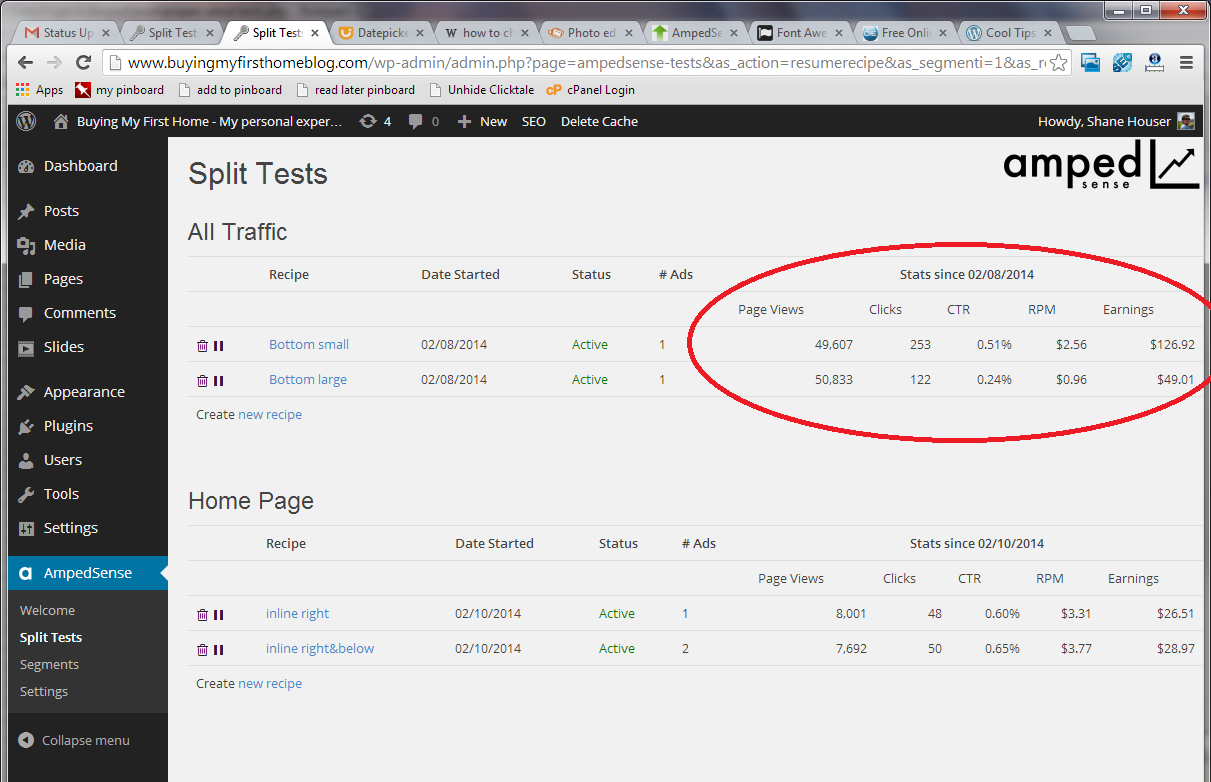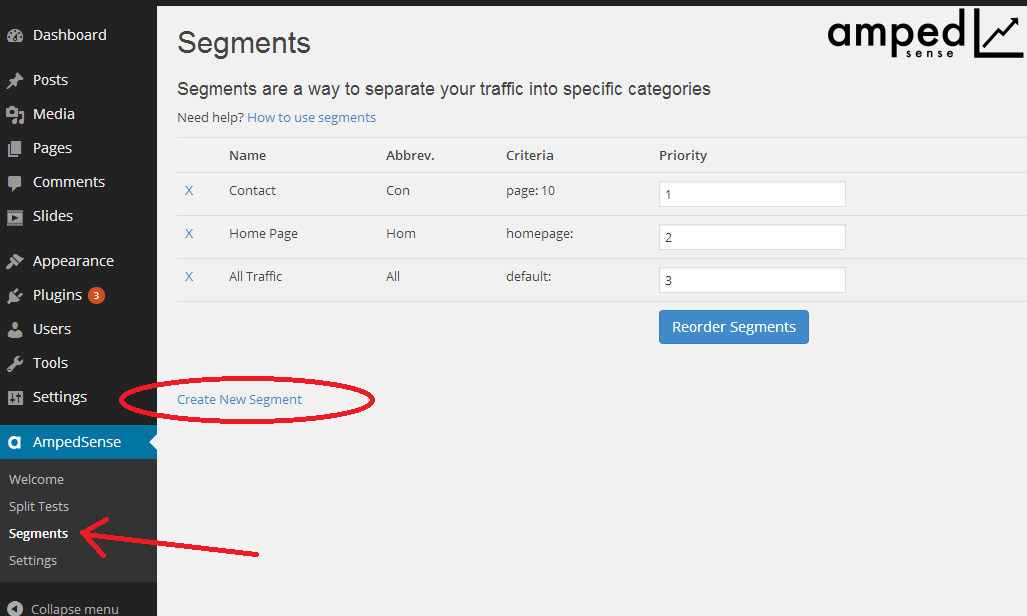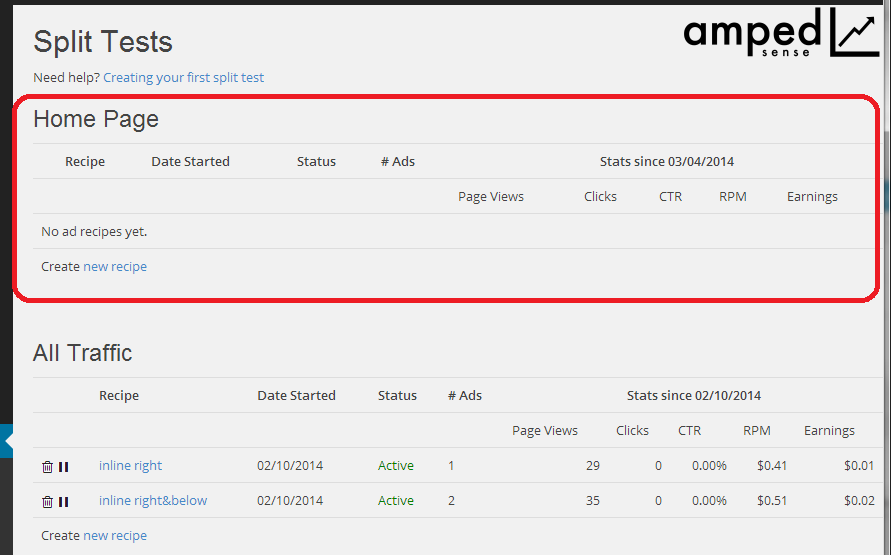I’ve spoken a lot on this site about choosing the best colors, best placement, and best sizes for your AdSense ads.
Yet a big question remains – how do you know which of the options for each of these work the best? I’m not talking about just taking suggestions. I mean how do you *really* know for sure that you’ve chosen the right position, size, and colors that are going to give you the best click through rates (CTR)?
The answer: Split testing.
What is split testing?
Split testing means showing visitors different versions of your site and keeping track of which ones are working the best. The traffic is essentially split into equal proportions and all site versions are shown in parallel throughout the data collection period. This is also know as “AB testing” because you are comparing version A with version B.
Let me explain with an example. Pretend we have designed a new logo for our site, but we’re not quite sure everyone’s going to like it. If we split tested, we could show half of the visitors the site with logo A, and the other half the site with logo B. Then we’d keep track of certain metrics – such time on site and orders placed – and when the day was over we’d compare stats to see which one performed the best. Then we’d pick the winner and make that the permanent logo.
It’s important that the test versions be shown at the same times (but to different visitors). If you show one version on Monday, and the next version on Tuesday, your results will be inaccurate (there could be drastic daily differences, in addition to environmental conditions that affect your traffic day by day – even hour by hour). Instead you need to split the traffic throughout the day.
At 8:46 visitor 1 sees version A.
At 8:47 visitor 2 sees version B.
At 8:48 visitor 3 sees version A.
Make sense? This is what we call testing in parallel.
Split testing ads
We can apply this same strategy to split test our ads to see which ones bring in the most revenue for us. We’ll show part of our traffic Ad 1, another part Ad 2, and the rest will see Ad 3. AdSense makes it very easy see the difference in performance between ads since they keep a lot of reporting data we can use to make decisions.
When you split test ads, it’s very important that you test in parallel instead of changing your ads over time. Ad performance heavily influenced by external factors outside your control (such as day of week, advertisers, even time of day), so you’ll make the wrong decision if you keep switching your ads yourself. Look at this example of my AdSense revenue for one site over a week:

You can see that if I had tested one ad on Saturday, and then a different ad on Sunday, I would have incorrectly concluded that the Sunday ad performed a million times better. But in reality there was no change in ads and my traffic was the same – perhaps there was a new advertiser dumping money into Google.
How to split test
You typically have three options to set up AdSense split testing on your wordpress site.
1) Use AdSense Experiments
Google created a feature in AdSense that allows you to split test ads. It’s relatively simple if you’re just going to be testing size and ad type, but trying to test multiple ads or different positions is not possible. That’s a bummer because that’s typically where you’re going to see your biggest increases. Read more about it here: https://support.google.com/adsense/answer/4599562?hl=en
2) Program a random split tester
If you know how to code PHP, it’s not terribly difficult to create a little script that will rotate your ads for you. But again, it can get increasingly complicated as you want to try different positions, quantities, etc.
3) Use a WordPress plugin
Wordpress has a slew of plugins out there. Searching from within your admin you’ll find plugins that help you inject adsense ads, and other plugins that help you rotate content to be split tested. The bad news is that there are currently no plugins that will allow you easily split test AdSense accurately, while keeping track of their stats.
Which is why I created a plugin that solved all my problems.
I was sick of having low AdSense earnings. Annoyed at tiny click-through-rates. Furious at miniscule RPM’s. And even more bothered that no one had created a solution like this already. So I took matters into my own hands and developed something that changed all that.
You can put something like this together if you know how to write WordPress plugins, understand the AdSense API, and have a few days to spare.
But if you’re like most entrepreneurs, you don’t. Your time is valuable. I realized this after a few people started asking me about sharing my custom built plugin with them.
So I’ve decided to put it up for sale, and would love to see you experience many of the same successes I’ve had with this plugin in your websites. Accurately split testing your AdSense ads and keeping precise stats so you know for a fact which ones bring you the most income – it’s something you’re going to wonder how you lived without.
Grab the plugin today for just $59. There’s no monthly cost, and I back it with a 30 day moneyback guarantee. There’s absolutely no risk to you.
PS. Be careful of some of the free WordPress plugins out there. In the past people have been known to swap out your advertiser ID with their own, meaning they’re getting paid for your clicks instead of you (nasty!)


































